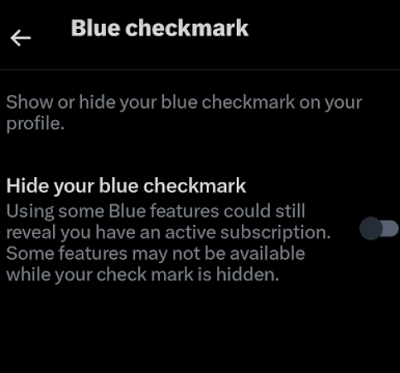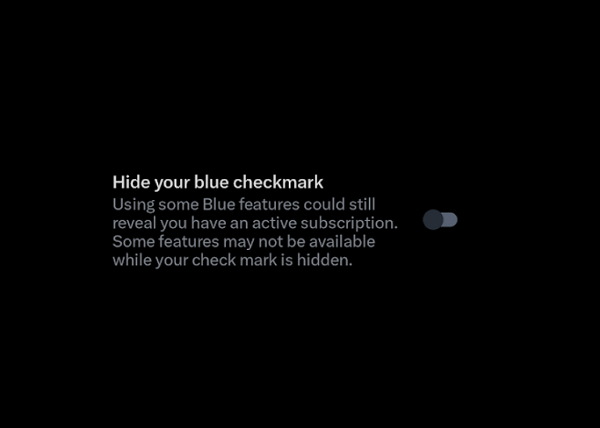This is quite the turnaround from Elon’s original pitch for his $8 verification/blue checkmark program.
Back in November, shortly after Musk took over at Twitter/X, the billionaire declared an end to the ‘lords and peasants system’ that previous platform management had implemented in deciding who gets a blue checkmark, and who doesn’t.
Twitter’s current lords & peasants system for who has or doesn’t have a blue checkmark is bullshit.
Power to the people! Blue for $8/month.
— Elon Musk (@elonmusk) November 1, 2022
Musk sought to sell users on the concept that they too could be lords, and that indeed, they had the right to such, and in this scenario, they could reclaim their lordship by paying him $8 per month for a blue check.
‘Power to the people’ Elon proclaimed, but now, X is adding a new setting that lets you hide your virtual lordship from view.
Today, X has launched a new element within its renamed XBlue package which lets you disappear your blue tick, if you’re a paying user.

As per X:
“As a subscriber, you can choose to hide your checkmark on your account. The checkmark will be hidden on your profile and posts. The checkmark may still appear in some places and some features could still reveal you have an active subscription. Some features may not be available while your checkmark is hidden.”
Which seemingly makes no sense. The whole selling point of XBlue was that you could purchase perceived importance, that you could buy yourself a crown, and put yourself on equal footing with celebrities.
So why the heck would you want to hide it?
Unfortunately, for some, the checkmark is now a negative marker, with some users choosing to block all blue tick accounts on sight. It seems that the original concept of enabling users to buy their way to platform celebrity hasn’t entirely panned out, while take-up of XBlue also remains very low, at around 0.3% of the platform’s overall user base.
Really, selling verification has been a flawed concept from the beginning, as the very act of selling blue ticks erodes any perceived value that the signifier may have once held, while the symbol also loses more value with every new user that signs up. Of course, Meta has also followed X’s lead in this respect, by also selling verification ticks, but that too is a flawed approach, which many within Meta reportedly highlighted to management before the company moved forward with the plan.
Providing the option to hide your checkmark further reinforces this. What was once an indicator of notoriety is now, for some, a mark of shame, to the point that the platform now needs to give users a means to hide the fact that they’ve signed up to the scheme.
Having to provide a way to mask a feature which it originally pitched as a value add is clearly not a great endorsement of the product. But X remains at least somewhat committed to the concept, and continues to try to push users towards paying to use the app.
Maybe, at some stage, X can get the offering right, and it will become a more valuable tool for actually verifying user identities, and thus combating bots and spam. But they clearly haven’t cracked the code yet.
But now, you can show your support for Elon in private – but if you edit a tweet, use any of the text formatting features, post a long tweet, etc., you could get found out.



